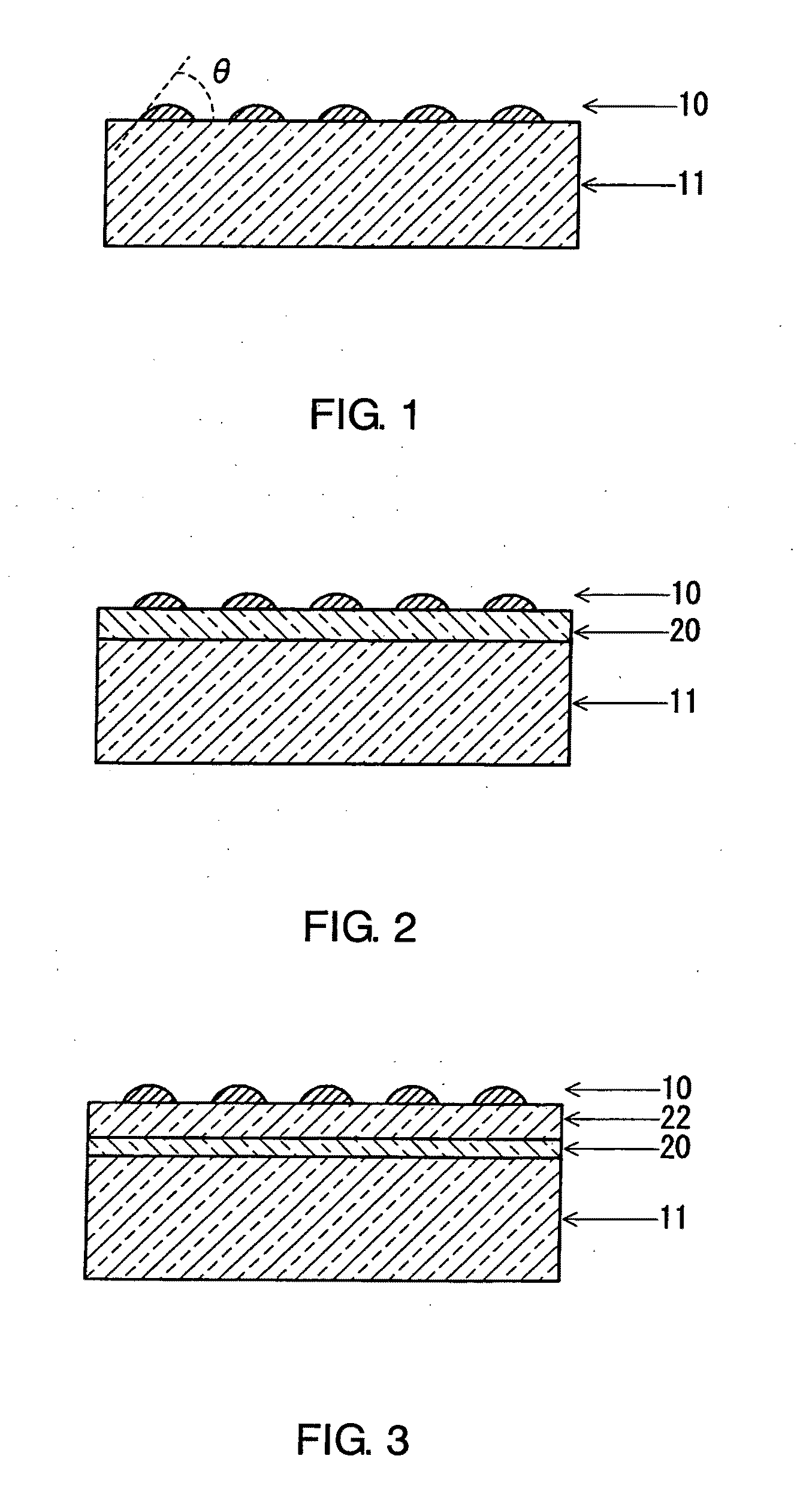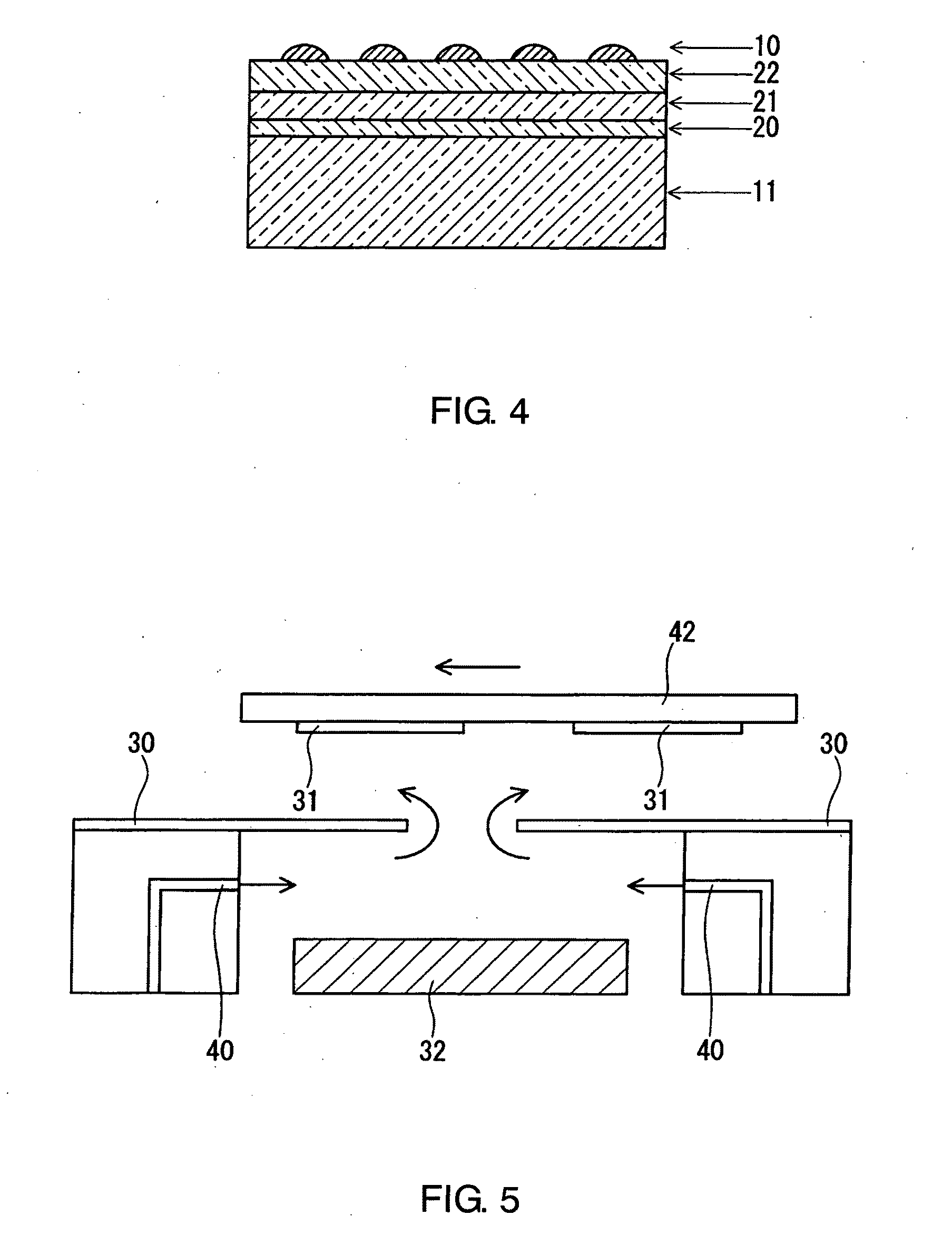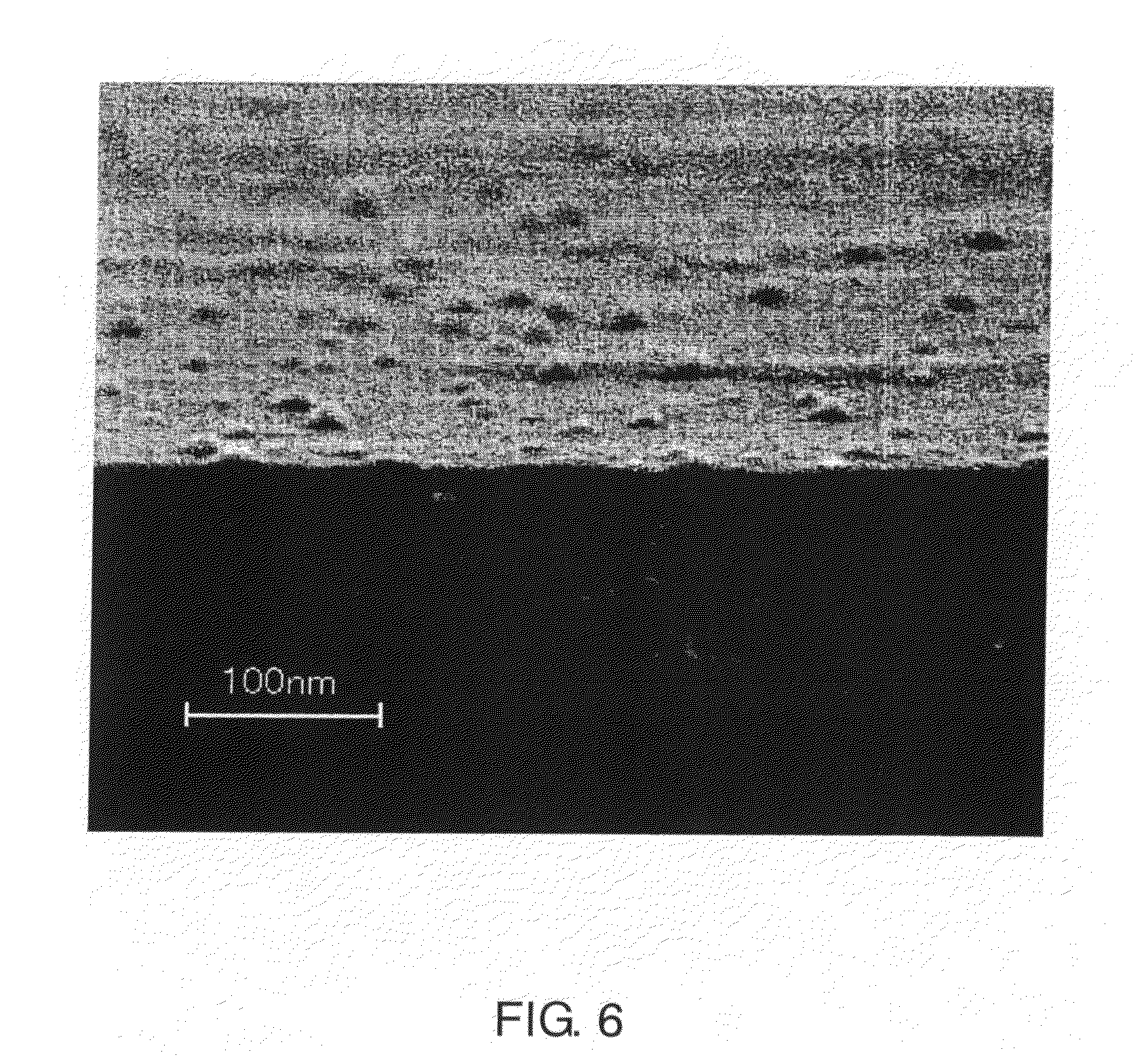Antibacterial Substrate and Method of Manufacturing the Same
a technology of substrate and antibacterial coating, which is applied in the direction of biocide, physical/chemical process catalysts, vacuum evaporation coating, etc., can solve the problems of economic waste, change in the appearance of the substrate, poor adhesion to the substrate,
Inactive Publication Date: 2010-01-21
NIPPON SHEET GLASS CO LTD
View PDF0 Cites 28 Cited by
- Summary
- Abstract
- Description
- Claims
- Application Information
AI Technical Summary
Benefits of technology
[0012]The present invention has been devised in view of the conventional problems described above, and it is an object of the present invention to provide an antibacterial substrate not only exhibiting an antibacterial property sufficiently and persistently but also being economically excellent.
[0016]According to the antibacterial substrate of the present invention, since an appropriate amount of antibacterial metal is present on the surface of the substrate, it exerts an excellent antibacterial effect. In addition, since an average of contact angles between the substrate and the antibacterial metal islands is as small as 90 degrees or less, the antibacterial metal islands have good adhesion to the substrate and thus their antibacterial effect is maintained for a long period of time. Furthermore, an amount of antibacterial metal to be deposited on the substrate is controlled strictly. Therefore, if the substrate has a light transmitting property, the light transmitting property is not impaired. Such a substrate also is economically excellent.
Problems solved by technology
Therefore, the substrate described in WO 2006 / 064059 A1 cannot exert the antibacterial effect efficiently in spite of an adequate abundance of the antibacterial metal, and thus it is economically wasteful.
In addition, the antibacterial metal tends to cause changes in the appearance of the substrate such as discoloration thereof.
However, since the antibacterial metal particles deposited on the substrate by this method have an approximately spherical shape, they have poor adhesion to the substrate.
Accordingly, this method has a problem that the antibacterial metal particles fall off easily from the substrate and thus their antibacterial properties are not maintained.
Method used
the structure of the environmentally friendly knitted fabric provided by the present invention; figure 2 Flow chart of the yarn wrapping machine for environmentally friendly knitted fabrics and storage devices; image 3 Is the parameter map of the yarn covering machine
View moreImage
Smart Image Click on the blue labels to locate them in the text.
Smart ImageViewing Examples
Examples
Experimental program
Comparison scheme
Effect test
examples
[0072]In order to describe the present invention in more detail, Examples and Comparative Examples are shown below. Firstly, samples having no photocatalyst layer are described. Secondly, samples each provided with a photocatalyst layer are described. Thirdly, samples using figured glass sheets are described.
the structure of the environmentally friendly knitted fabric provided by the present invention; figure 2 Flow chart of the yarn wrapping machine for environmentally friendly knitted fabrics and storage devices; image 3 Is the parameter map of the yarn covering machine
Login to View More PUM
| Property | Measurement | Unit |
|---|---|---|
| contact angles | aaaaa | aaaaa |
| diameters | aaaaa | aaaaa |
| diameters | aaaaa | aaaaa |
Login to View More
Abstract
An antibacterial substrate of the present invention includes a substrate and a plurality of antibacterial metal islands formed on the surface of the substrate. The antibacterial metal islands are exposed to an external atmosphere. The average value of contact angles between the substrate and the respective antibacterial metal islands is 90 degrees or less, as measured on the basis of results of surface observation with a scanning electron microscope.
Description
TECHNICAL FIELD[0001]The present invention relates to an antibacterial substrate and a method of manufacturing the same.BACKGROUND ART[0002]In recent years, inorganic antibacterial agents have attracted attention because they are superior in safety and durability to organic antibacterial agents. Examples of such inorganic antibacterial agents include those employing antibacterial metals such as silver, copper, and zinc having an antibacterial effect and those employing photocatalysts such as titanium oxide.[0003]Antibacterial metals such as silver, copper, and zinc deactivate bacteria by a substitution reaction with component materials of cell membranes and cytoplasms and thus exert an antibacterial effect. On the other hand, photocatalysts such as titanium oxide produce reactive oxygen species when irradiated with ultraviolet rays. These reactive oxygen species attack cell walls and membranes of bacteria, and thus the photocatalysts exert an antibacterial effect.[0004]There is also...
Claims
the structure of the environmentally friendly knitted fabric provided by the present invention; figure 2 Flow chart of the yarn wrapping machine for environmentally friendly knitted fabrics and storage devices; image 3 Is the parameter map of the yarn covering machine
Login to View More Application Information
Patent Timeline
 Login to View More
Login to View More Patent Type & Authority Applications(United States)
IPC IPC(8): A01N25/08A01N59/16
CPCA01N25/34B01J35/004C23C14/228C23C14/22C03C17/09C03C17/36C03C17/3607C03C17/3663C03C2204/02C03C2217/40C03C2217/71C23C14/185A01N59/16A01N59/20B01J35/39
Inventor INAOKA, DAISUKEANZAKI, TOSHIAKI
Owner NIPPON SHEET GLASS CO LTD
Features
- R&D
- Intellectual Property
- Life Sciences
- Materials
- Tech Scout
Why Patsnap Eureka
- Unparalleled Data Quality
- Higher Quality Content
- 60% Fewer Hallucinations
Social media
Patsnap Eureka Blog
Learn More Browse by: Latest US Patents, China's latest patents, Technical Efficacy Thesaurus, Application Domain, Technology Topic, Popular Technical Reports.
© 2025 PatSnap. All rights reserved.Legal|Privacy policy|Modern Slavery Act Transparency Statement|Sitemap|About US| Contact US: help@patsnap.com



